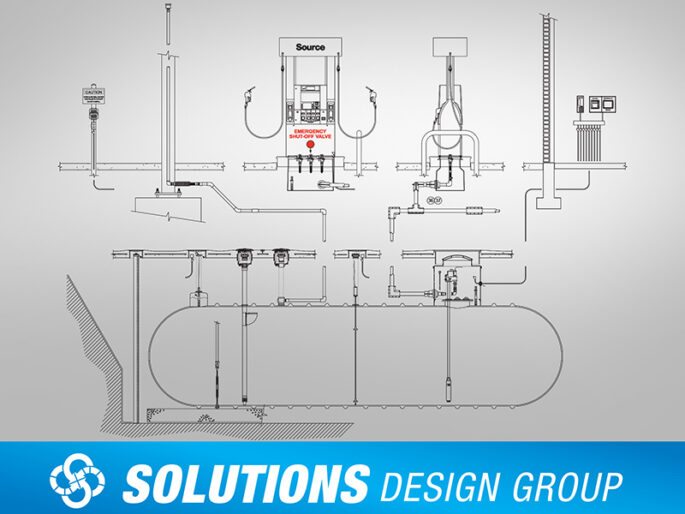Q: What function do interstitial tank sensors perform?
A: Interstitial tank sensors are used in an underground storage tank monitoring system to indicate when liquid is leaking into a UST’s interstice, which is the gap between the inner wall and outer wall of a double-walled tank. By providing early warnings of leaks in the space between the two tank walls, interstitial tank sensors help prevent catastrophic releases.
Q: What are the different types of interstitial tank sensors?
A: Because the tank may be leaking into the interstice from either the inner or outer wall of the UST, different varieties of interstitial tank sensors are available to help indicate what kind of leak is occurring.
The UST’s interstice can be either brine-filled or dry, and this drives the two primary interstitial monitoring methods.
In a brine-filled system, a reservoir is installed on the top of the tank and filled with a brine (or glycol) solution. The reservoir opens to the interstice at the bottom. The interstitial sensor monitors for changes in the level or pressure of the brine.
A brine-filled system equipped with a dual float hydrostatic sensor, as shown in the illustration, provides information about the source of the leak. A “low-level alarm” indicates stored fuel has leaked through the inner wall into the interstitial space and displaced or mixed with the brine. This action causes the brine level in the reservoir to drop. A “high-level alarm” indicates an external fluid — usually groundwater or rainwater — is leaking into the interstice through the outer wall of the tank, causing the brine level to rise.
In dry interstitial monitoring, the gap between the two tank walls remains empty. The sensor’s job is to detect the presence of liquid entering the normally dry space. Non-discriminating and discriminating sensors for dry interstice monitoring are available. Discriminating sensors for dry interstice monitoring can distinguish between hydrocarbons leaking out of the primary tank wall and water leaking in from the secondary tank wall. Non-discriminating sensors require additional investigation into the origin of the leak.
Q: Where can I learn more about interstitial monitoring?
A: Learn more about monitoring UST interstices on the Petroleum Equipment Institute’s Wiki and RP100.
Q: What brands of interstitial tank sensors does Source North America supply?
A: We supply interstitial tank sensors from Incon, OMNTEC, OPW Fuel Management Systems, Pneumercator and Veeder-Root.
Q: How do I order interstitial tank sensors?
A: Contact your local Source representative or visit Shop.sourcena.com.



